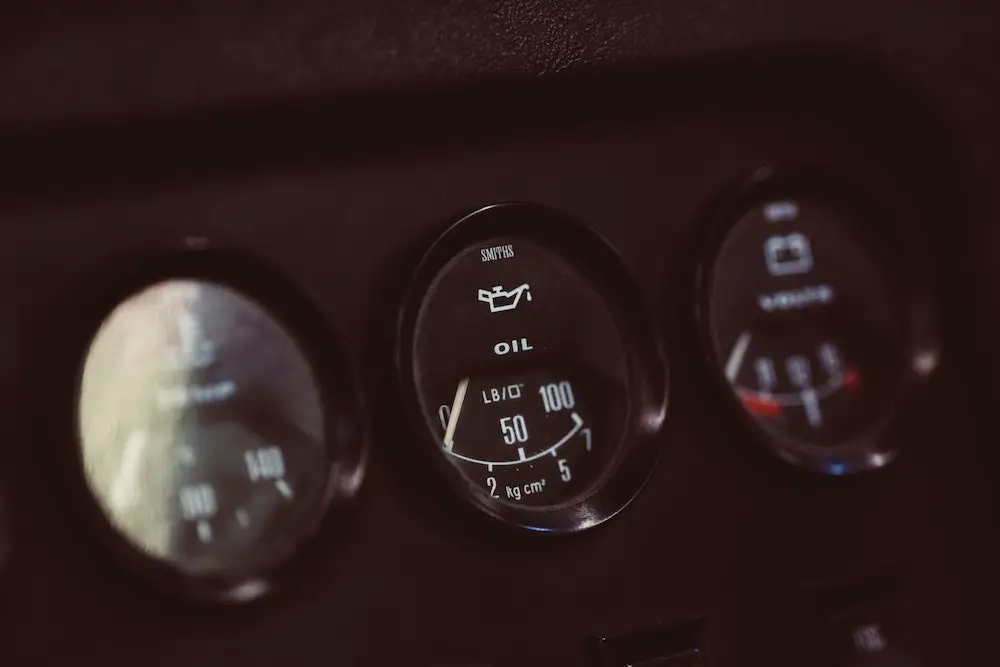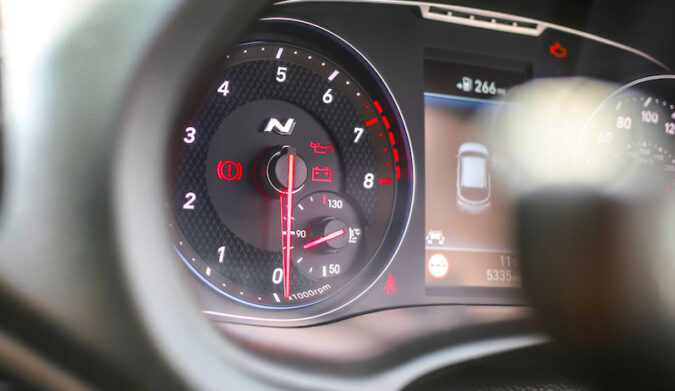Are you experiencing some weird things in your cabin? The oil pressure is low and the oil light is on? If this is the case, it’s not the end of the world and you are only having trouble with your oil sending unit. So, we are going to help you out how to solve this problem quickly and effectively.
Problems like this can be really frustrating to deal with since you get so many warnings and you think that your car is dead or will die soon. But this isn’t always the case since these things can also fail and cause a number of issues. And we are talking about these cheap parts that have a role in determining the oil pressure.
That’s why you need to troubleshoot and learn more about these components and what they do and what are the possible consequences of these units failing and the repercussions of this component failing. Knowing this will be a complete lifesaver for you and your car. You will be able to solve your problems quickly and effectively without having too much time wasted on mechanics. And we are going to help you out with your trouble.
First, we are going to learn what is an oil sending unit and how does it work. Then we will learn where it is located and the symptoms of bad oil sending unit. Later we will learn the reasons why it fails and the cost involved in fixing it. We will also learn how to replace it DIY. So, if you want to learn more on this topic, follow along.
What Is An Oil Sending Unit?
Modern cars as we all know are all computerized and everything is well connected to the ECU or PCM on some vehicles. This greatly improves the behavior of the vehicle and its overall work and usability. But in some cases, it will make you regret that you have a car, like in this case when this device is failing.
So, what is the oil sending unit? An oil sending unit is a device that is installed in every vehicle with an internal combustion engine. This device is also known as an oil pressure sensor or oil switch.
This device is controlling the oil indicator on your car as well as the oil pressure indicator. The device is essential if you want to have proper oil pressure readings and the engine to work really well.
If the oil sending unit doesn’t work well, you will have a number of problems, and the overall engine work will not be at the level you desired.
Because the oil sending unit is sending very important information to the ECU and the ECU based on this information adjusts the engine work. With the help of the oil sending unit, the computer of the vehicle is regulating the oil flow, the temperature, and the oil pressure.
As you can see, this is a really important device that has to be always in check if you want to have your car in proper working order all of the time and not experience some symptoms that will mean that the car is due to be serviced. But have you asked yourself how does the oil sending unit works under the skin? Well, in the following chapter, we are going to discuss precisely where we will cover this in great detail.
How Does The Oil Sending Unit Work?
So, before we dive deeper into the symptoms and reasons why the oil sending unit might fail. Let’s first learn how the oil sending unit works in the first place. What is its method of action and how does it collect the data and send the data to the computer? That’s what we are going to learn in this chapter.
The oil sending unit is an electronic device. Meaning that it works with the help of an electric current.
When you start your engine, the electric circuit is closed and the oil light is on as you probably know. But as soon as there is proper oil flow into the engine after the engine is started, the oil light disappears. When the oil sending unit sees that there is oil pressure is opened and all of the lights and warnings disappear from the cluster.
In this case, everything is working fine and you don’t have to worry about the oil pressure and the oil level.
When these lights do not turn off and keep working. There are two things that are a possibility. Either the engine is broken and it doesn’t have the proper oil pressure or the oil sending unit is broken on the car.
So, this is the point where you need to put your sleeves up and start troubleshooting the problem. In the past, there were no computers. But since the 90’s everything is computerized and with a proper diagnostics tool, everything can be diagnosed.
For this purpose, you will need to have an OBD2 scanner tool. Also, you can bench test an oil sending unit as well. Meaning that there are a ton of ways you can determine if the sensor is broken. Now let’s see where this oil sending unit is located.
Where Is The Oil Sending Unit Located?
So, we learned what is an oil sending unit and how it does its magic. Now let’s discuss more on where this oil sending unit is located for you to be able to find it and learn the location of this sensor on your engine.
The location of the oil sending unit is down below next to the oil filter housing. It is essential for the oil sending unit to be close to the oil filter in order to determine the oil pressure quicker. So, the number one place that you should search for this device is near the oil filter. It should be screwed into the block with a long wire from the outside that goes to the wiring harness.
On some engines though, this sensor is mounted high above next to the firewall or on the front side of the engine. Different manufacturers have different engineering and they could install some of the components in a different place that is not very logical to us.
So, in order to determine the position of the sensor, you will have to do some research online and see some images of an engine of the same type as yours, and one of them might be the one you are looking for.
Another way to find the oil sending unit is to get a flashlight, remove the top cover of your engine and do some digging. After 5 minutes of observing where everything goes, you will come to a conclusion on where is this sensor located. And I really encourage you to do this method because you will be able to learn a lot about your engine and where everything is located. Then you can move on to test the oil sending unit.
Symptoms Of A Bad Oil Sending Unit
We learned what is an oil sending unit and how does it work and its location on the engine. Now let’s discuss the symptoms of a broken oil sending unit.
Knowing the symptoms will be a lifesaver for you because based on them, you will be able to determine if something is wrong with your engine or there is something wrong with this sensor in general.
It will make the diagnosing process a breeze and you will fix this problem in no time and resume driving without problems. So, what are the symptoms? There are basically three of them. Let’s elaborate.
1. Oil Light Is On
The first thing that you will notice when the oil sending unit has failed is the oil light on. This light as you know turns on every time you start the vehicle and shuts off after a couple of seconds as the sensor gets the right oil pressure readings.
But when the sensor is broken, the oil light will stay on. The circuit will remain closed when you start the engine and the oil light will hunt you until you replace this sensor.
A lot of beginners would probably think that there is a problem with the oil, namely a low oil level in the vehicle. But this isn’t the case whenever this problem happens. The important thing you need to do is to check the oil level and also check the condition of the oil.
If the oil is good and at the proper level height, then the oil sending unit is probably the reason why this problem is happening to you and you know where to look for your problem. Now let’s move on to the next symptoms of this problem.
2. Blinking Oil Pressure Light
Another symptom when the oil sending unit isn’t working is the blinking oil pressure light. This light shouldn’t blink at all.
Whenever this light blinks it shows that there is a problem with the oiling system. You will need to further diagnose the problem and take these things seriously.
This inconsistent nature of the light is a clear example of an oil sending unit that is failing. What is sad though, is that not a lot of owners would come to the conclusion that this blinking light is because of the oil sending unit but because of something different like a failed oil pump or clogged oil passages, or even a lack of compression in some cases.
That’s why it is important for you to take things further and diagnose the problem with the help of an OBD2 scanner and learn if there are errors connected to the oil sending unit. If there are, it means that the oil sending unit is due to be replaced with a new one if you want the problem to be solved permanently. And that is your best bet when it comes to a problem like this.
3. Inaccurate Oil Pressure Readings
Many vehicles still have oil pressure gauges that indicate the oil pressure inside of your engine. There should always be ideal oil pressure if you don’t want to have problems with your engine. The oil pressure is one of the most crucial things that you need to know and that’s why there is a separate gauge when it comes to measuring this pressure.
When the oil sending unit fails. This oil pressure gauge is known to malfunction and causes a number of issues.
The prime problem would be the bad information that you will get. You will think that you have a problem with the oil pressure in your car. Something that in reality is not true.
So, whenever your engine performs well and doesn’t act strange but the oil pressure is down or too high, it is worth investigating this sensor and making a call of whether or not this is causing all of these problems.
Later in the article, we are going to explain how you can perform this work on your engine. But first, we need to understand why this oil sending unit is failing in the first place. This is often useful to know and learn what could cause this component to fail and the ways you can diagnose a broken oil sending unit. So, if you want to learn more, follow along.
4. Visible Leaks Of Oil
But before we dive into the reasons why this oil sending unit breaks. Let’s cover one last symptom that you should note is that the oil leaks that are developed around this sensor.
Sometimes this happens and the oil leaks from the sensor itself. This will be most notably when the car is working and there is a pressure buildup in the sensor.
When this happens it doesn’t mean that the lights will turn on at the dash. It might simply release a few drops of oil every now and then like in the video that we attached.
So, it is often useful that you check the condition of the sensor itself and see if there are visible oil leaks from it when you start the car. If there are leaks coming out from the sensor, then you know that the sensor is due to be replaced and you need to do this promptly if you want to avoid some permanent damage to your engine.
In the following chapters, we are going to cover precisely the reasons why the oil sending unit might fail and develop problems.
Reasons Why Oil Sending Unit Breaks
Now let’s take a look at the reasons why this oil sending unit or sensor fails. This is also useful to know and learn the possibilities of why it might fail and how to prevent it from failing.
The biggest reason why this component fails is age. Age affects everything and so does this sensor. There are cars that haven’t been through a lot but they are pretty old and sensors like this tend to fail and develop a ton of issues on the car. So, knowing this will make you sure that one of the possibilities if this sensor hasn’t been replaced, is that you should replace it if you get oil light warnings on your dashboard.
The second probable reason is dirty oil or oil sludge. There are engines that haven’t been loved during their life and oil changes were performed rarely. So, this sludge could enter the oil sending unit and stick inside. Preventing the sensor to do its normal work and make the car show errors on the dash and make you think that you have a problem with your oil pressure.
And the third reason is probably that there are leaks that are developed on the sensor itself. Some of them leak from the threads if there was not used a good thread locker or they leak from the connector. These are the easiest to diagnose since these leaks are clearly noticeable and you will be able to tell if the sensor is broken or not in a matter of seconds.
Overall, that is in general when it comes to the reasons why the oil sending unit might fail and develop issues on your car. Now let’s see how you can diagnose one.
Diagnosing An Oil Pressure Switch/Oil Sending Unit
Now let’s discuss diagnosing this problem with this oil sending unit. This problem is not that difficult to diagnose. There are basically two ways how you can pull this off. One of them is by using an OBD2 scanner tool and the second one is by bench testing the sensor itself. We will cover both ways.
The first way we learned is to diagnose the sensor with an OBD2 scanner tool. These scanners can be found for a really good deal on Amazon or at any car parts store.
Once you get your hands around one of these scanners you need to connect the scanner to the OBD2 port that is located usually under the front dash, close to the hood release.
Connect the tool and scan the car for errors. If you got an error like the P0522 or similar one that indicates “Engine Oil Pressure Sensor Or Switch” and indicates a low voltage. Then probably this sensor is dead and has to be replaced.
The second method is to bench test the sensor with a multimeter. Ideally on the car because if you remove it you will need to simulate pressure. Usually with an air compressor.
This work is done with a multimeter. And in the video that we attached above, you can clearly see how this procedure is done. Nothing too complicated to diagnose a bad oil sending unit. Now let’s learn how to fix one of these sensors on the cheap at home using common tools.
How To Fix The Oil Sending Unit DIY?
Fixing the oil sending unit is quite simple. The first thing that you need is to diagnose this component and determine if it’s really making the problem on your car.
Once you have diagnosed the problem. The next thing will require getting a new part from your local parts store. And then replacing the old part with this new one that is working properly.
What is peculiar with these sending units is that they need to be removed with a special socket. Meaning that you will also need to get a socket to remove the sensor without damaging it. Not all cars are like this. But if you are not able to fit a regular wrench around this socket. Then you would probably need to get a specific socket.
Once you are able to remove it. You just unplug the connector at one end and then unscrew the sensor. A little bit of oil should be released but nothing significant.
When bolting the new sensor, make sure that you add a thread locker. In order to make sure that it doesn’t leak. Because it could leak and cause you problems.
Once these things are sorted, you can tighten the sensor up to spec and plug the connector back in its place. Then the oil sending unit will be sorted out and all of the lights will disappear from the cluster.
Cost To Fix The Oil Sending Unit
We covered everything when it comes to the oil sending unit and the last thing that we need to cover is the cost to fix this problem. How much is it?
The short answer is that it is fairly cheap. The part itself can cost from $30 to $80 depending much on the car.
With labor, the average price of replacing this component is about $125. Not expensive as you can tell. If you decide to replace it by yourself, you will save some money on the component.
Facts about Symptoms and Fixes for a Failing Oil Pressure Sensor:
- A faulty oil pressure switch or sender can cause several problems that may result in danger associated with low oil pressure, so it’s important to get them checked out immediately.
- The check engine light may turn on if the engine control unit (ECU) detects a problem with the oil pressure sensor.
- A bad oil pressure switch may cause the oil pressure warning light to be on all the time, or not function at all. A failed sender may cause the gauge to be pegged at high, or not function at all.
- A faulty oil pressure switch or sender may leak engine oil, which requires a professional inspection.
- The oil pressure sensor is designed to warn the driver when the oil pressure gets too low, and the measurement method depends on whether the vehicle is equipped with an oil pressure gauge or warning light.
- The oil pressure sender changes its internal resistance as the oil pressure fluctuates and sends a signal to the oil pressure gauge on the dash to move the needle in vehicles with an oil pressure gauge.
- The oil pressure switch may be normally open or normally closed and changes position to turn on the warning light when the oil pressure gets too low in vehicles with a warning light.
- The oil warning light bulb is part of the electrical circuit for the oil pressure, and a bad bulb may cost the engine due to lack of warning when there’s no oil pressure.
- Before replacing the oil pressure sensor, a thorough diagnosis should be performed by a professional mechanic using equipment such as a scan tool, digital multimeter, and mechanical oil pressure gauge.
- A faulty oil pressure switch or sender should be replaced immediately, and some vehicles require professional expertise to access and replace the switch or sender due to their complex location.
Conclusion To Oil Sending Unit
In this article, we have covered quite a bit when it comes to the oil sending unit. We learned what this component is and why it is so important.
We learned that this unit is measuring the oil pressure. And whenever is not working right is showing some symptoms. Something like bad oil pressure readings, oil light, and oil leaks from the sensor.
Then we learned how to diagnose the problem quickly and effectively. This is key if you want to avoid possible problems with your engine. Lastly, we learned how you can fix the problem. As well as how much money it will cost you to perform this work on your car. Overall, it is not expensive and could be done for less than $125.




